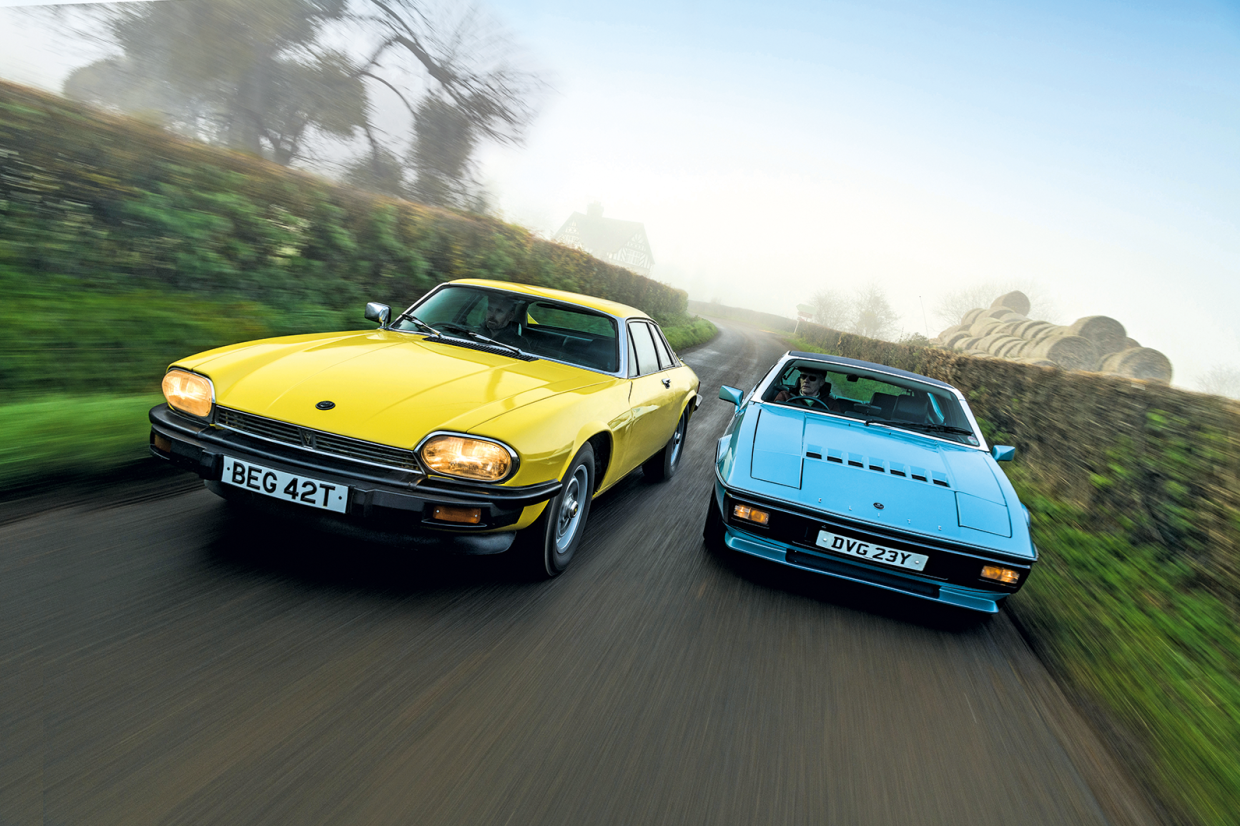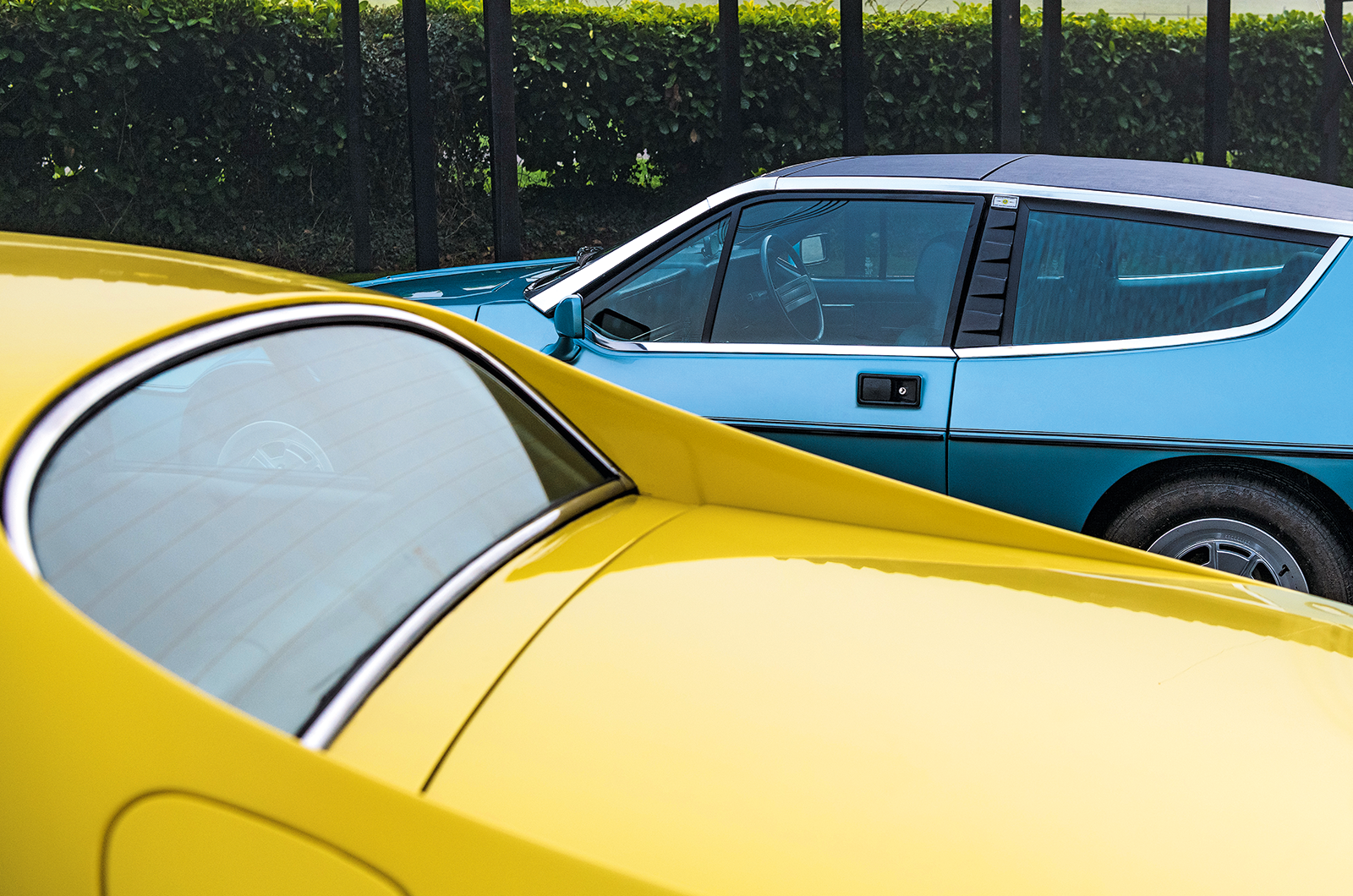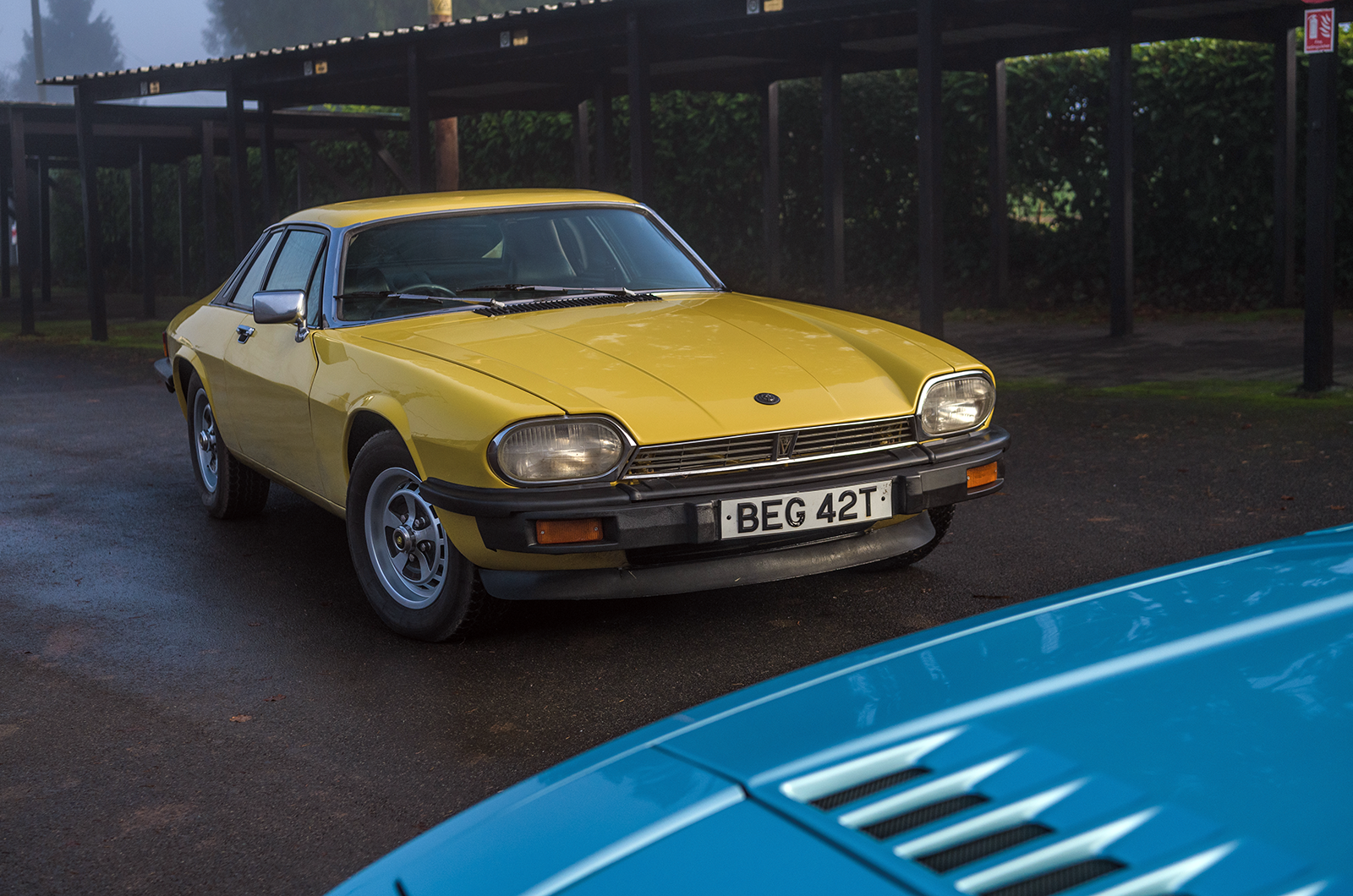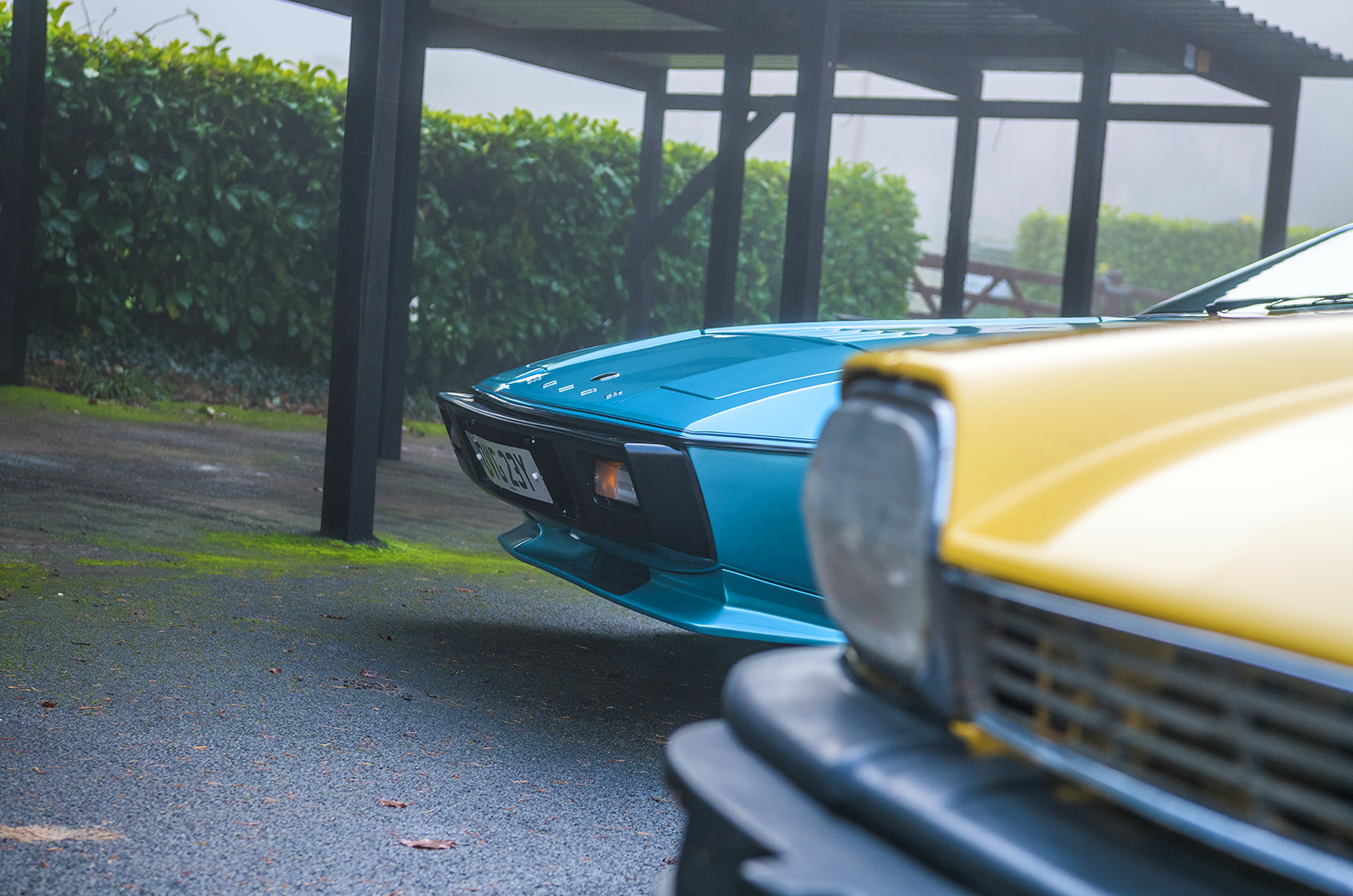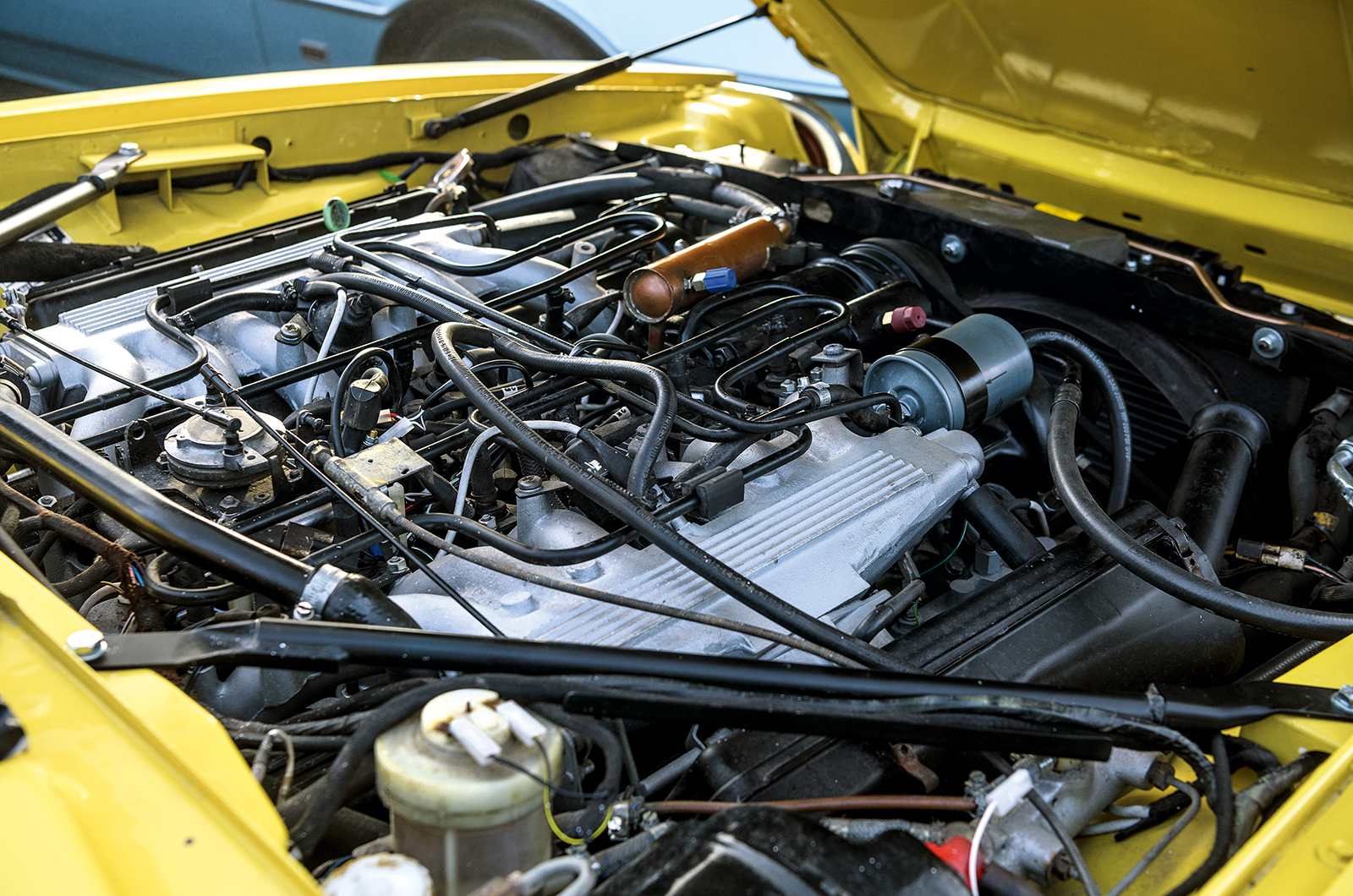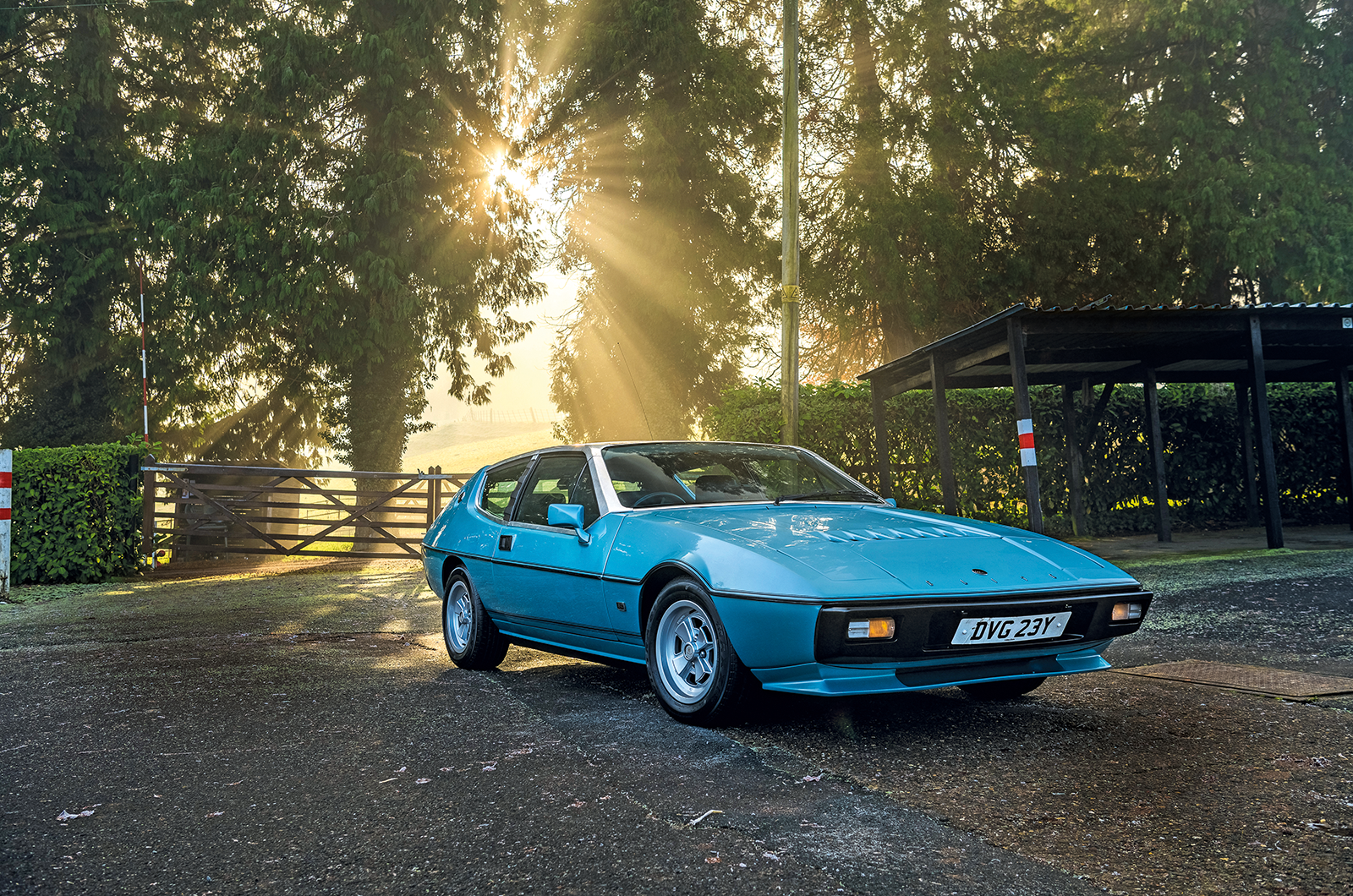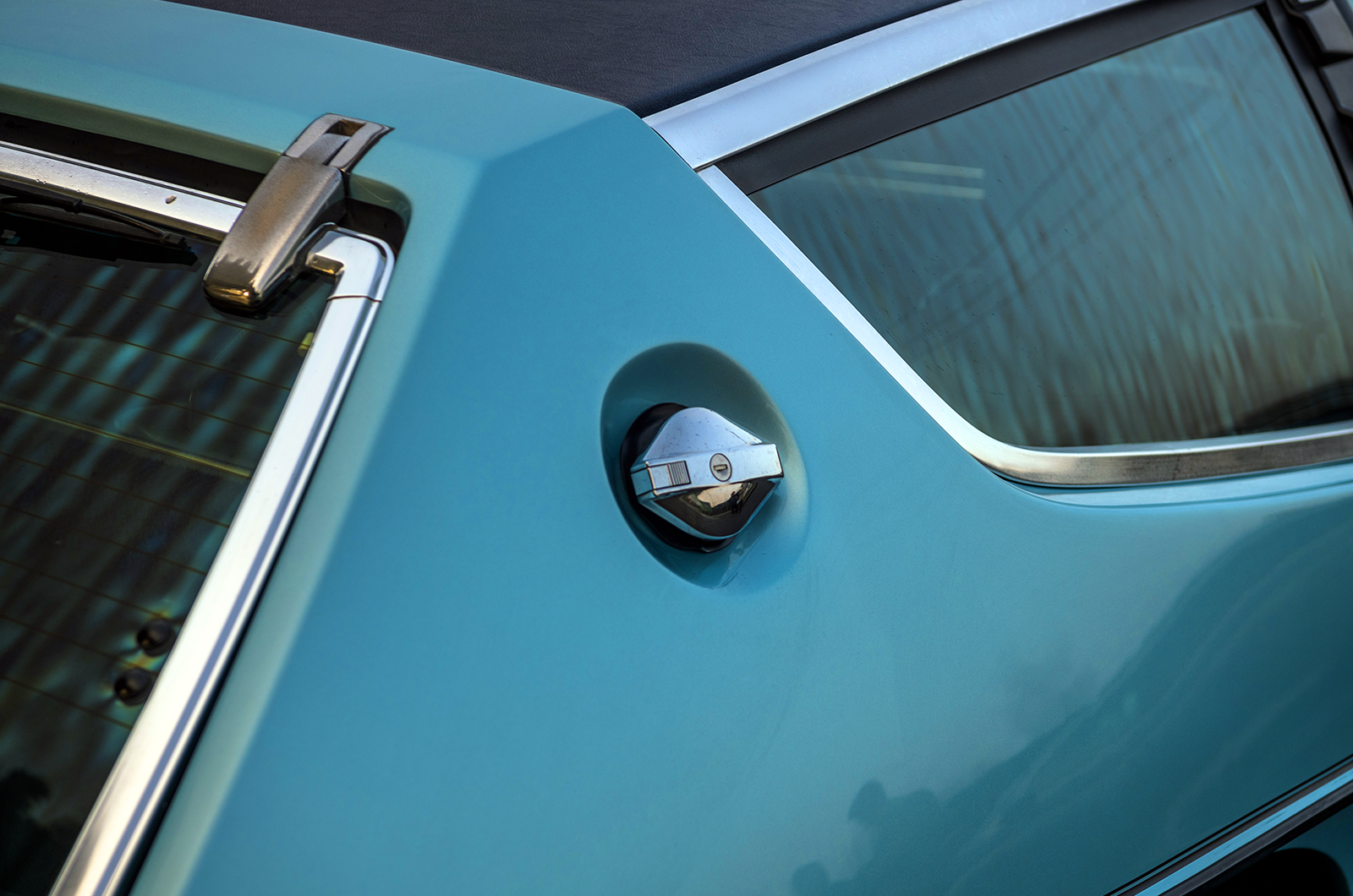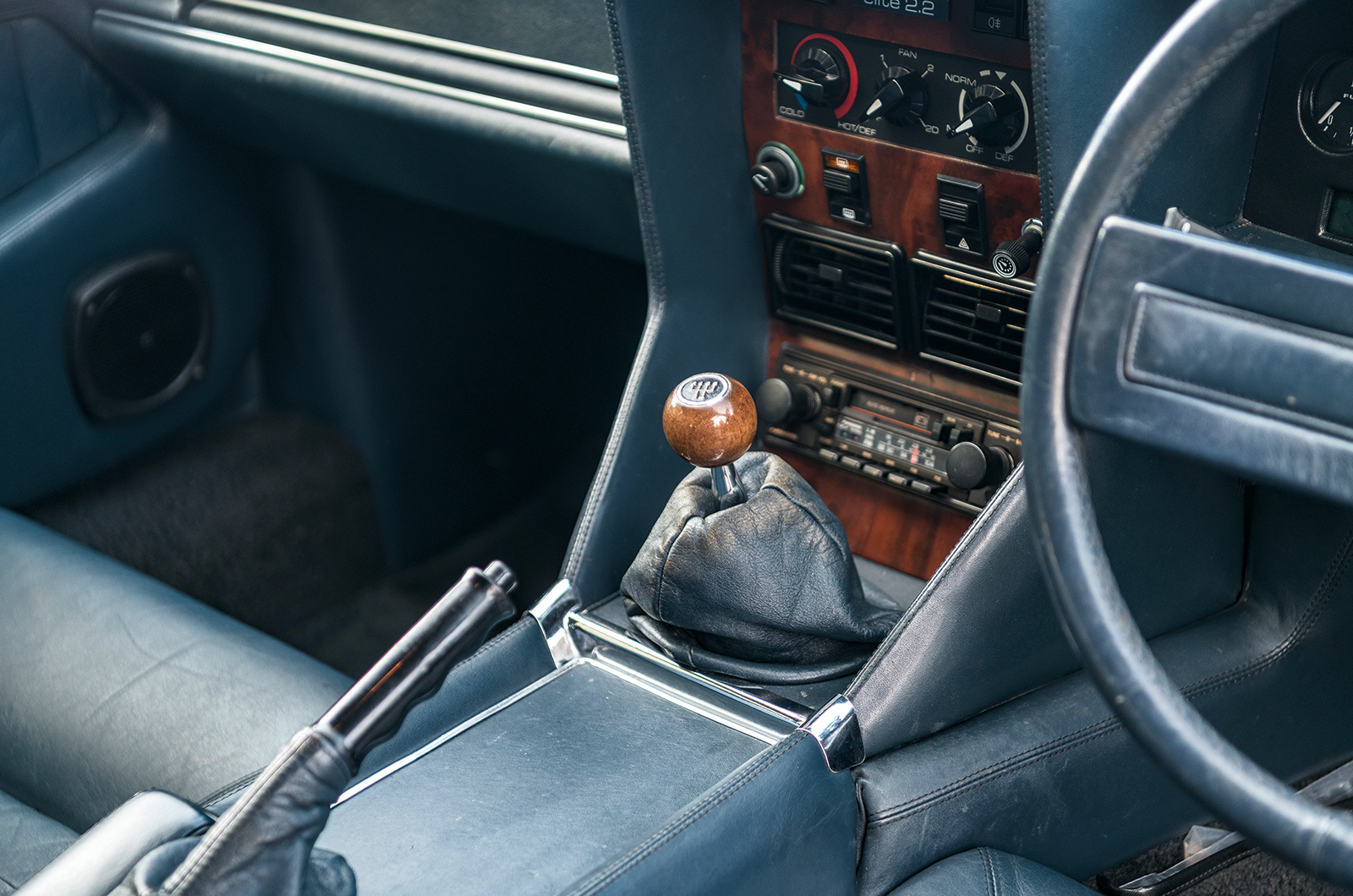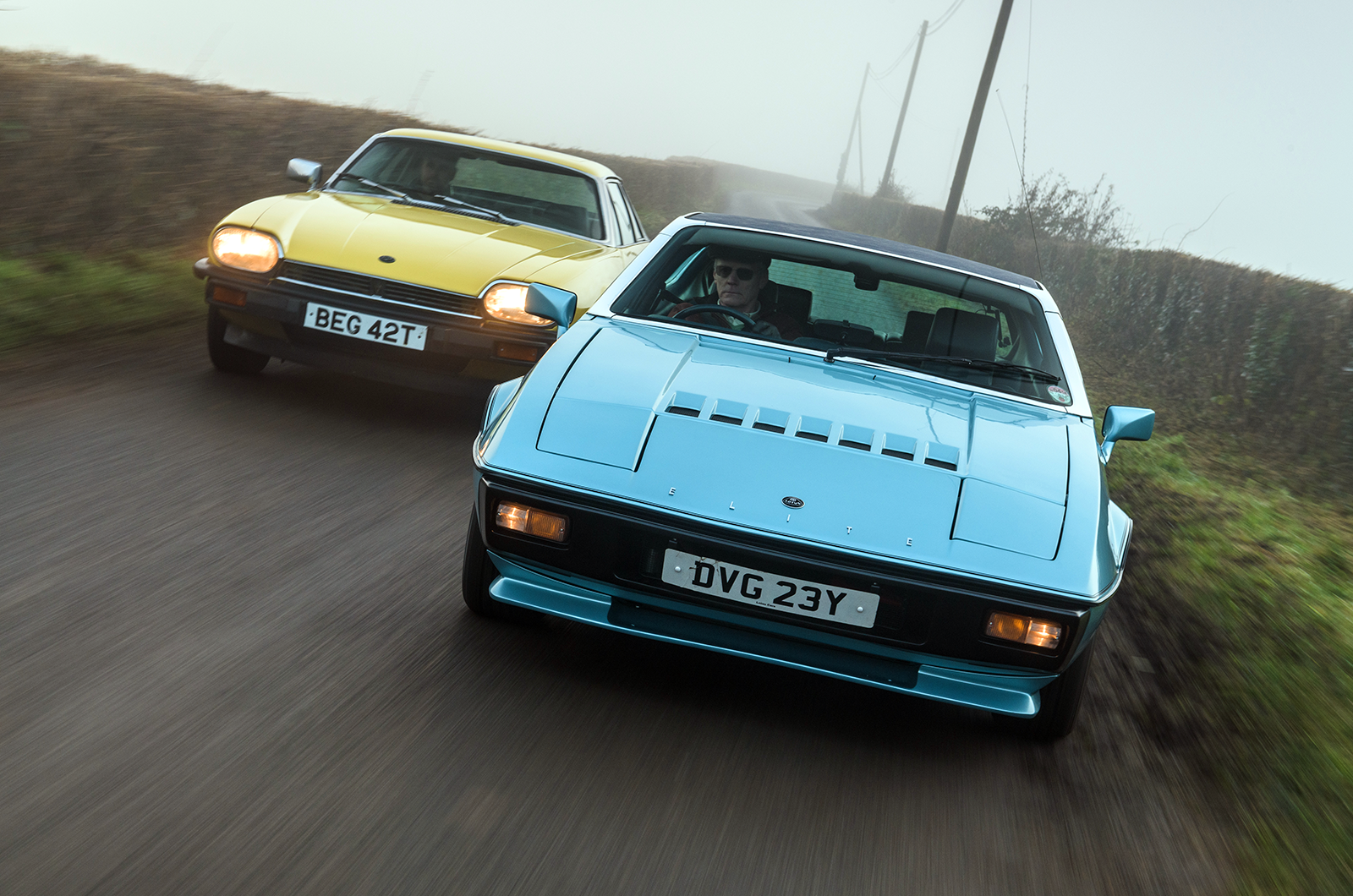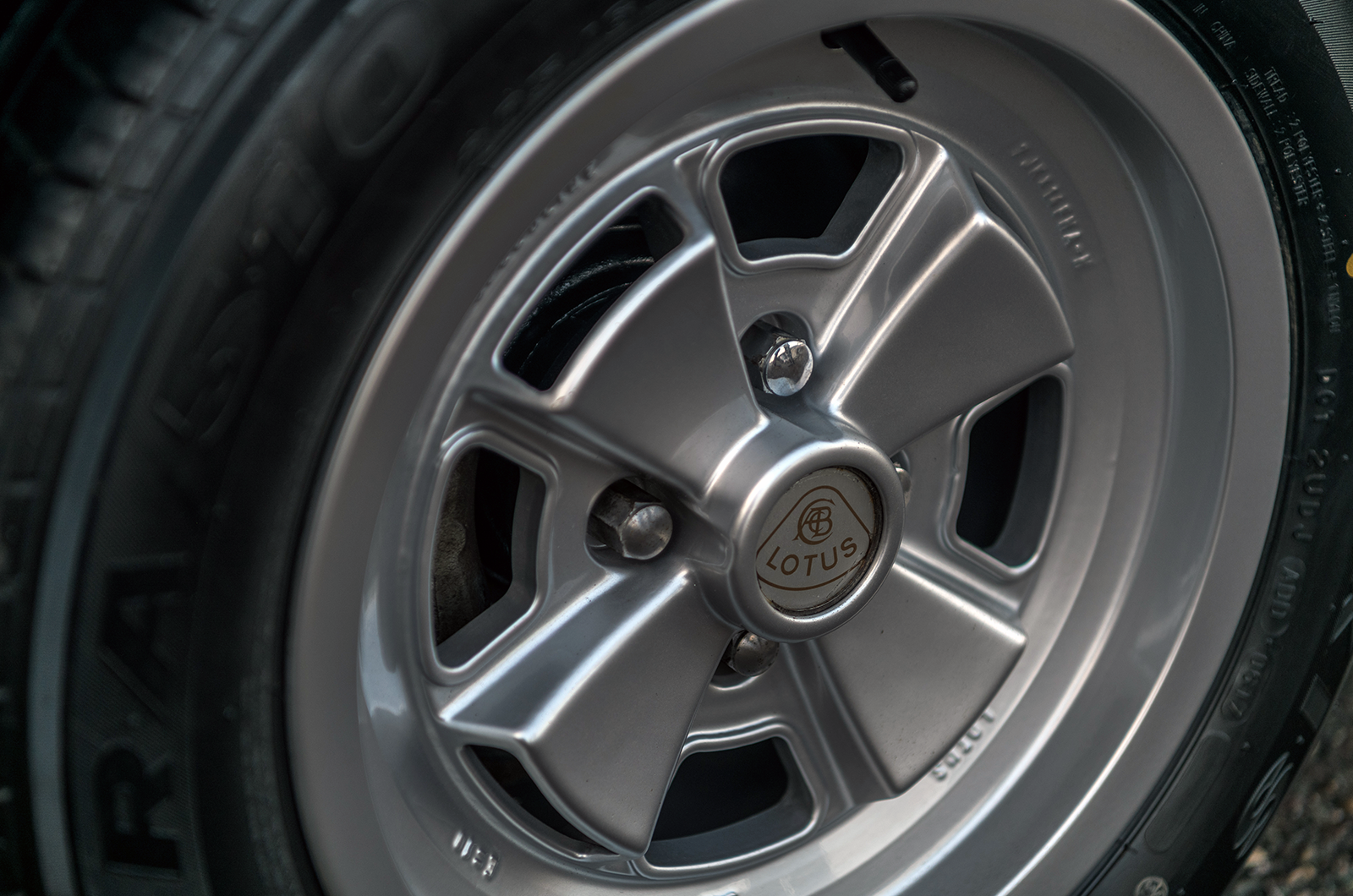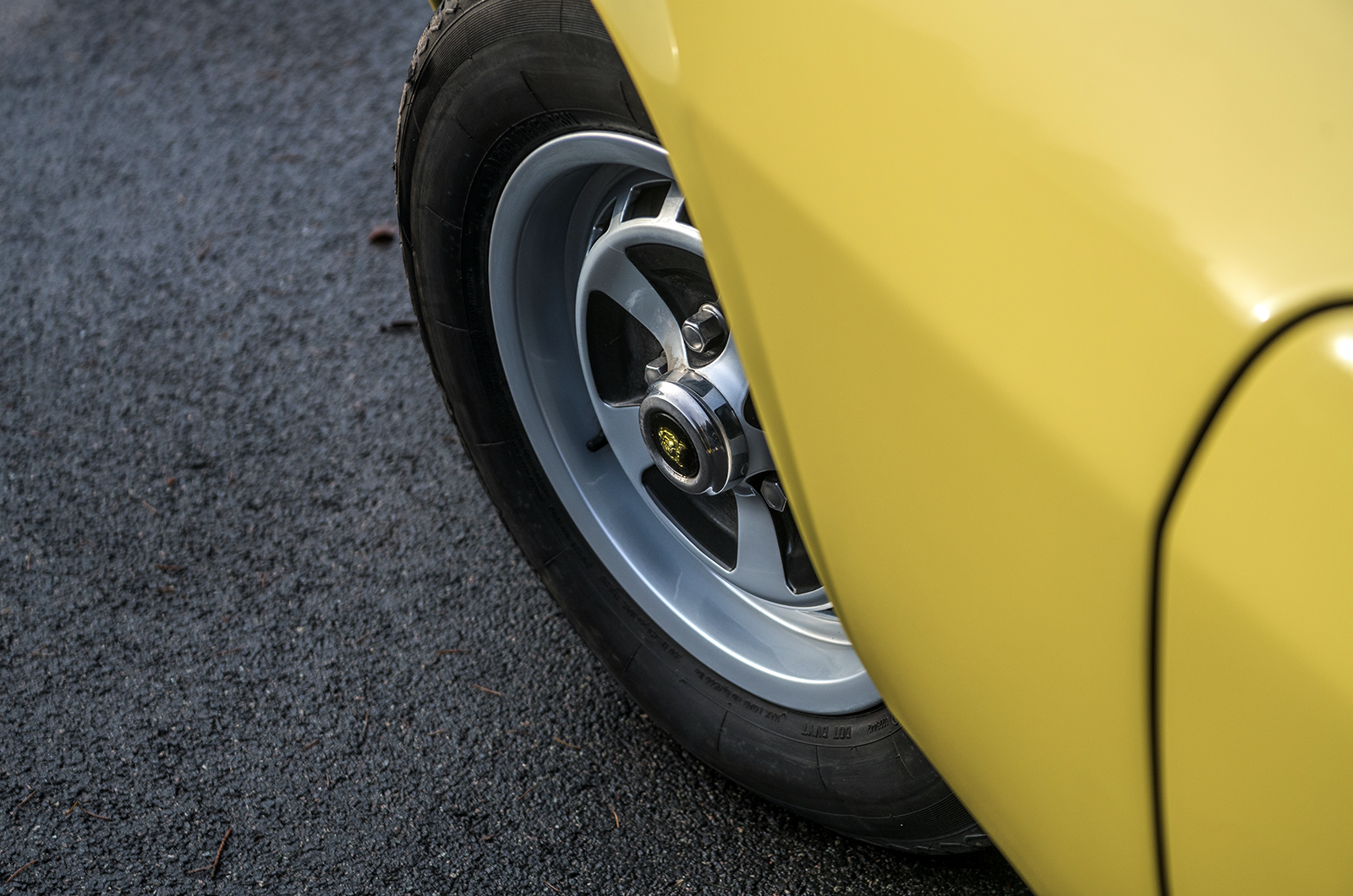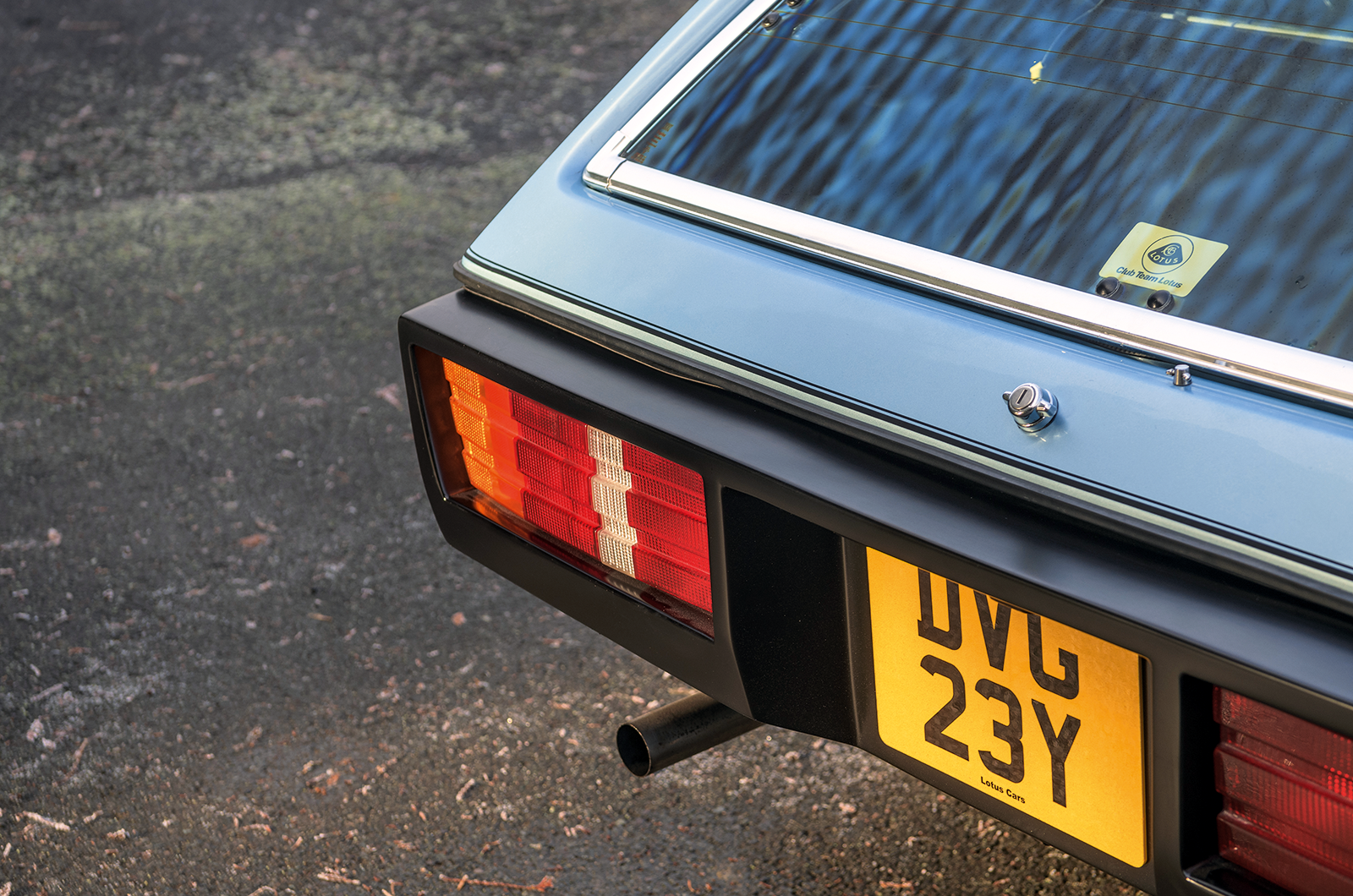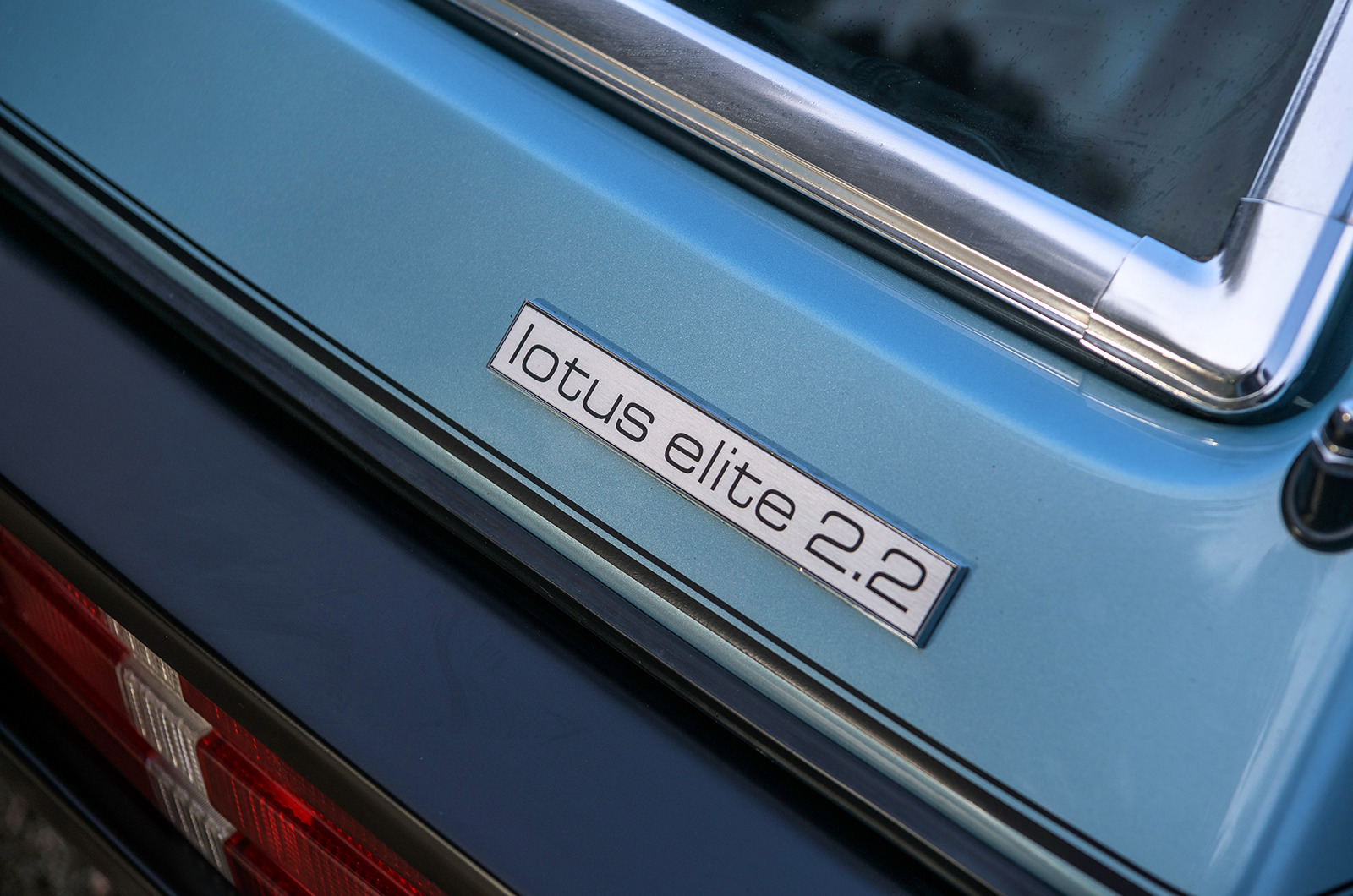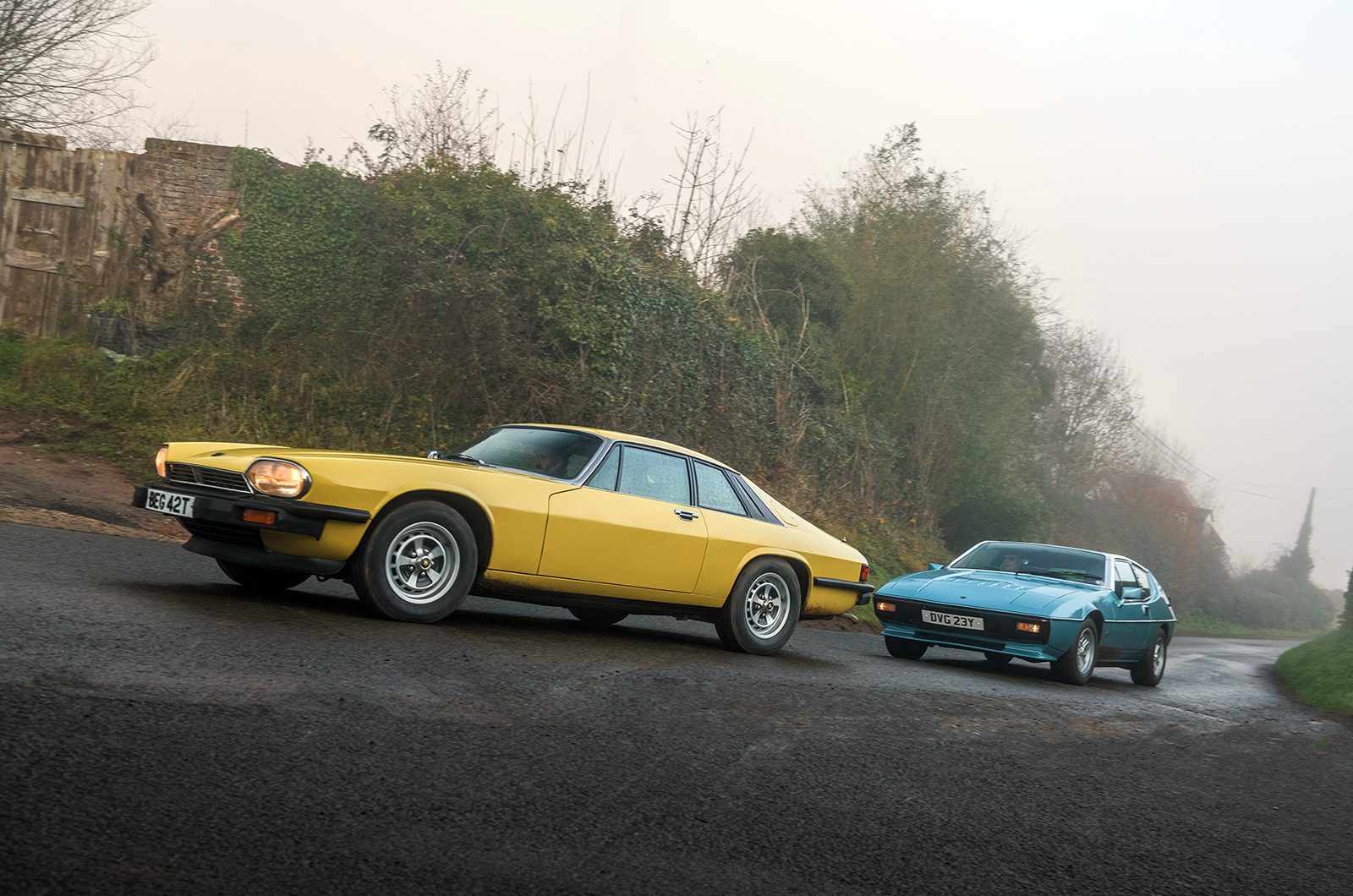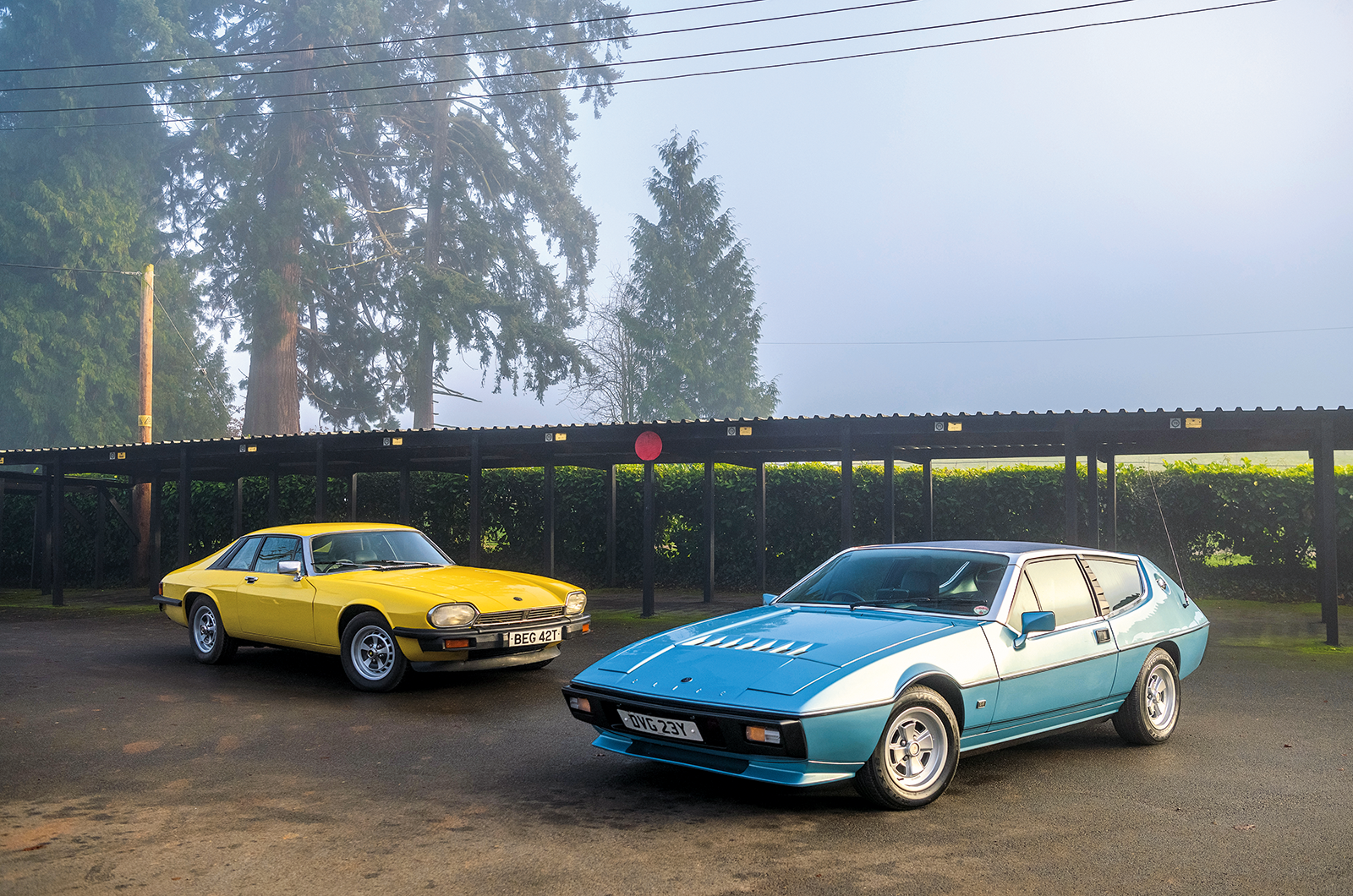Not so the Lotus Elite, although in this later post-1980, Type 912 2.2-litre form (front spoiler, bigger rear lamps and square numberplate chief among the visual tell-tales) it is much more flexible than you might imagine.
It’s well capable of taking full throttle from 20mph in fourth gear on its flatter and fatter torque curve.
Not that you’d want to treat it like that too often, because the Getrag five-speed ’box is pleasant to handle. It is more positive than the old Austin Maxi-derived unit in the 2-litre model while giving 60mph in second gear and 83mph in third, should you wish to avail yourself of the full 7000rpm.
Even lower slung than the XJ-S, the Elite has similar rear vision issues caused by the massive C-pillars but makes better use of its space, with adult-sized, deeply cushioned back seats.
Its rear occupants sit knees-up, but the Jaguar’s is more a perch that is really only good for teenagers.
A rare full-leather cabin lifts the tone of this Elite’s interior considerably and, being one of the more exclusive Riviera versions, there is a lift-out roof panel above the front seats. A glass divider between the rear seat and the rather short boot helps to banish fuel and exhaust fumes.
Head-to-head on the road – which would you pick?
Elite owner Angus Watson, a retired engineer who now lives in Stroud, became interested in Lotus and his hero Jim Clark from the age of six and is still passionate today.
“I grew up in Tyneside,” Watson says, “and I remember getting beaten up at school when Graham Hill won Sports Personality of the Year rather than a footballer because I was the only one who knew who he was…
“I was forever getting into trouble drawing Europas on my school books and was fascinated by Chapman’s theory of elegant simplicity – the aerodynamics, the plastic technologies.”
Watson finally bought an S2 Europa, followed by an Elan +2 and an Elan fixed-head. “I’ve always used original Lotus parts and found the cars to be reliable,” he adds.
With a family under way he bought his Ice Blue ex-Mike Kimberley 1982 Motor Show Elite Riviera in 1984 and put 30,000 miles on it in the first year as his everyday car, with factory services every 6000 miles.
“I paid £11,000 when I could have had a Maserati Bora for the same money,” he recalls. “That would be a £200k car now, this is worth about £20,000 and is one of the best.”
The cars’ styling has aged well
The Elite, freshly revived by well-known specialist Paul Matty in Worcestershire, cruises quite peacefully in top but sounds throaty and aggressive when extended in the indirect gears, with a rate of pick-up that is not massively adrift of the Jaguar until you get beyond 70mph.
Where the XJ-S hums like a turbine, the Elite makes healthy, deep-lunged and lusty four-cylinder-type sounds that are the polar opposite of the Jaguar’s suave refinement and effortless muscle.
But while it loses out in absolute straight-line urge, on a piece of road where nature rather than civil engineering dictates the terrain the Elite is probably the quicker car.
Utterly composed, poised and stable, it goes where it is bidden absolutely faithfully with a minimum of body roll, understeer and drama.
Swift progress is not only natural but almost relaxing because the Lotus’ driving position is so good, the ride so comfortable and free from flab, and the responses so predictable.
The Elite’s rear lights come from a Rover SD1
By tweaking the XJ’s suspension and steering to favour a subtly firmer set-up, Jaguar made the XJ-S feel like a smaller, handier car than its saloon brethren.
Initial impressions are that the accurate steering is about the right weight but not over-burdened with feel, yet somehow that’s part of the velvety, insulated character of the car.
The ride is as soft, quiet and controlled at 10mph as it is at 110mph, and there is an eerie lack of wind noise around its ugly, cheap-looking painted-metal door window frames.
The Jaguar is not as chuckable as the Lotus, and is much heavier and larger, but it’s a supremely balanced and confidence-inspiring vehicle.
It won’t do anything ungentlemanly if you back off in the wrong place or leave your braking too late, but the XJ-S is not a car you naturally drive near its limits. Nor do you deny it the respect it deserves in the wet, because both break the magical spell of its composure and refinement.
The notorious Malcolm Sayer buttresses; Jaguar extends more than a foot longer than the Elite
I like the Lotus and Jaguar very much, but possibly more as ideas than for the troubled reality of actually owning either of them.
As they enter their fifth decade, however, maybe we can allow ourselves the indulgence of celebrating the concepts rather than lingering on the shortcomings.
We Brits seem to be forgiving of foreign exotica, yet ready to stick the boot in to anything made here in the ’70s.
Certainly there are parallels that can be drawn in the quality problems that made both cars frustrating to own, particularly in the case of the Lotus with its rust-prone chassis and inherently flawed rear suspension design.
Two different approaches to the same task
On balance I would probably take the Jaguar. Flagship of the British Leyland range, the XJ-S was more a straightforward case of build-quality issues.
It was a marvellous ananchronism, one of the planet’s great luxury cars built by Marxists in donkey jackets, that stuck two fingers up at a world that had written off the strike-torn UK; a car so much better than it needed to be that it was still in production 20 years later.
If the XJ-S was too much of a good thing the Elite was never quite enough, inviting the attentions of Rover V8 engine-swappers who missed the point of what Colin Chapman was trying to do with this light, safe, luxurious and efficient four-cylinder, 130mph four-seater.
This was a project that, I suspect, tested his ingenuity as much as anything he ever put on four wheels for road use. That alone might be a reason for seeking out a good one, although they are few and far between.
Images: Olgun Kordal
Thanks to Shelsley Walsh; Paul Matty Sportscars
Factfiles
Jaguar XJ-S (Pre-HE)
- Sold/number built 1975-’80/14,800
- Construction steel monocoque
- Engine all-alloy, sohc-per-bank 5344cc V12 with Lucas fuel injection
- Max power 285bhp @ 5800rpm
- Max torque 294Ib ft @ 4500rpm
- Transmission four-speed manual, RWD
- Suspension independent, at front by semi-trailing wishbones, coil springs, telescopic dampers rear lower wishbones with driveshafts as upper links, radius arms, twin coilovers per side; anti-roll bar f/r
- Steering power-assisted rack and pinion
- Brakes discs, with servo
- Length 16ft (4872mm)
- Width 5ft 11in (1791mm)
- Height 4ft 2in (1265mm)
- Wheelbase 8ft 6in (2591mm)
- Weight 3763lb (1707kg)
- 0-60mph 6.9 secs
- Top speed 153mph
- Mpg 13
- Price new £14,472
- Price now £5-18,000*
Lotus Elite
- Sold/number built 1974-’82/2398
- Construction galvanised steel backbone chassis with glassfibre body
- Engine all-alloy, dohc 2174cc 16-valve slant-four, twin Dell’Orto 45DHLA carburettors
- Max power 160bhp @ 6500rpm
- Max torque 160Ib ft @ 5000rpm
- Transmission five-speed manual (optional three-speed automatic), RWD
- Suspension independent, at front by wishbones, anti-roll bar rear trailing arms, lower links; coilover dampers f/r
- Steering power-assisted rack and pinion
- Brakes discs front, drums rear, with servo
- Length 14ft 11in (4458mm)
- Width 5ft 11in (1816mm)
- Height 3ft 11in (1207mm)
- Wheelbase 8ft 1in (2483mm)
- Weight 2429lb (1102kg)
- 0-60mph 7.5 secs
- Top speed 132mph
- Mpg 36.2
- Price new £16,433
- Price now £3-10,000*
*Prices correct at date of original publication
READ MORE
Why the Jaguar XJ is the world’s best saloon car
Who says there weren’t any great cars in the ’80s?
The greatest ’50s sports cars: XK120 vs MGA, AC Ace, Healey 100 & TR3A
Martin Buckley
Senior Contributor, Classic & Sports Car
